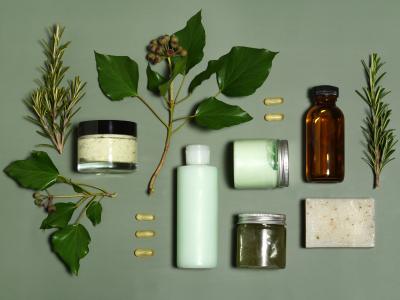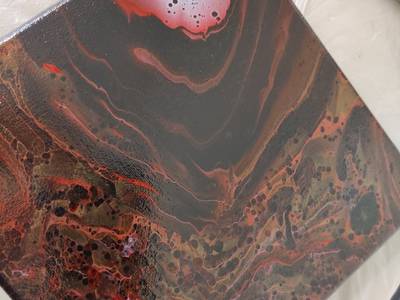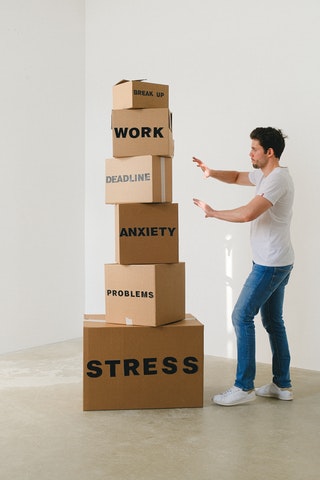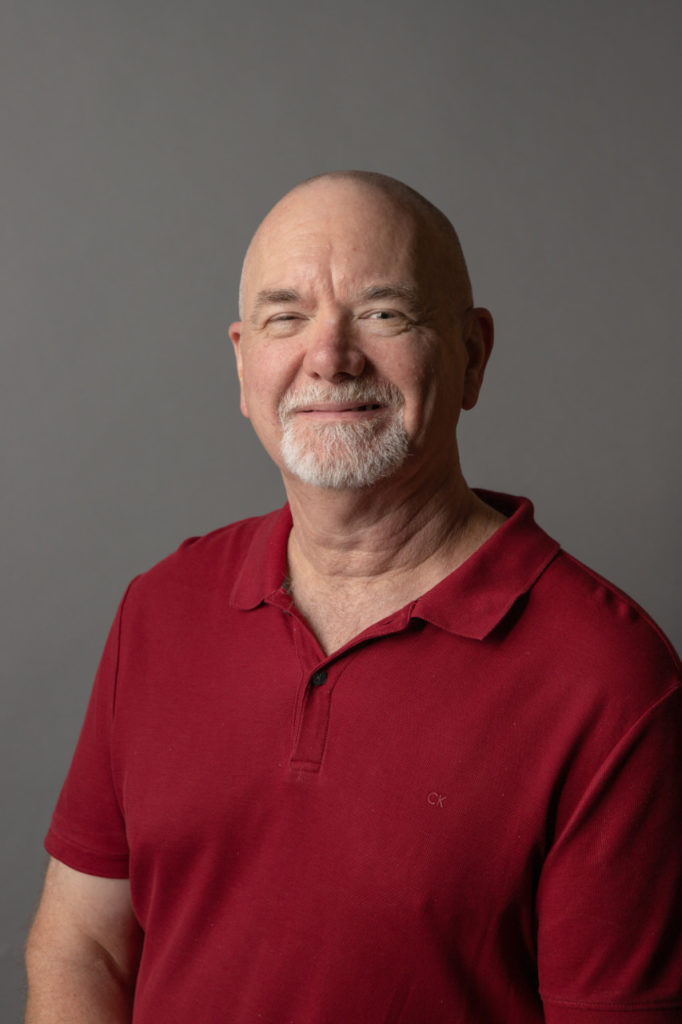After enjoying a delicious meal, we may be tempted to kick back and relax. However, emerging research suggests incorporating a brisk walk into your post-meal routine can offer numerous health benefits. From improved digestion to better blood sugar control, the advantages of walking after eating are backed by scientific evidence!
Enhanced Digestion:
One of the primary benefits of walking after eating is improved digestion. Physical activity helps stimulate the digestive system, encouraging the efficient breakdown of food. A study published in the "Journal of Gastrointestinal and Liver Diseases" found that post-meal walks accelerated the rate at which food moved through the stomach and intestines, reducing feelings of bloating and discomfort.1
Blood Sugar Regulation:
Walking after a meal may contribute to better blood sugar control, especially for individuals with or at risk of type 2 diabetes. A study in the "Diabetes Care" journal demonstrated that a short, 15-minute walk after each meal significantly lowered post-meal blood sugar levels in individuals with type 2 diabetes.2
Weight Management:
Incorporating walking into your post-meal routine may contribute to weight management. A study published in the "Journal of Physical Activity and Health" found that individuals who engaged in post-meal walks experienced reduced blood triglyceride levels, which are associated with improved metabolism and weight control.3
Mental Well-being:
Physical activity, including walking, has been linked to improved mood and reduced stress levels. Taking a short stroll after a meal can help combat feelings of lethargy and promote a sense of well-being. A review in the "British Journal of Sports Medicine" highlights the positive impact of physical activity on mental health.4

Sometimes, walking may not be an option, and that’s ok! The subtle strength of any low-impact exercise offers wonderful benefits and is accessible to individuals of all ages and fitness levels. Low-impact exercises such as using a rebounder or simply bouncing in place for 2 minutes can offer similar physical and mental health benefits!
The evidence supporting the benefits of walking after eating is compelling. From aiding digestion and regulating blood sugar to contributing to weight management and mental well-being, taking a post-meal stroll or even bouncing in place is a simple yet effective way to enhance overall health!
Incorporating this habit into your daily routine may lead to long-term positive outcomes, making it a small step with significant health rewards.
Sources
As we come into the darker part of winter and the days approach their shortest lengths, many people struggle with their mood. Sometimes called Seasonal Affective Disorder it can range from mild to severe. In addition, the holidays can be a difficult time for many people—especially when dealing with loss, isolation, or inability to connect with family and friends. There are options for getting through this time with greater ease and well-being.
From a Chinese Medicine perspective, this time of year calls for a natural slowing and drawing inward: a time for nurturing, quiet contemplation and taking a break from the tendency to strive for more.
From this perspective, the desire to slow down and reflect is not pathological but a natural reflection of the seasonal changes. This time is important to consolidate and prepare for the coming growth of spring. It’s ok to not always be striving and pushing. However, it should not be a depressing struggle. If you struggle with this time of year here are some recommendations to navigate the shorter days with better ease:

It’s looking like Newvember with all the great changes we have coming!
Raja Wellness welcomes Fielding Carroll, LAc! Those of you coming in to see us for allergy treatments recently have probably already met Fielding. Fielding is a native Kentuckian and a classmate of mine from Acupuncture school. I am happy to welcome him aboard to our team! He’s been diligently learning the nuances of SAAT (our specialty acupuncture technique for alleviating allergies of all kinds that was pioneered by Dr. Soliman). In addition to his focus on mastering this new technique, he brings a wealth of experience in the treatment of digestive disorders and health coaching embracing food as the first medicine and foundation of better health! In addition to offering acupuncture services, personalized nutritional coaching is also available with Fielding.

Fall wellness is a frequent topic for us—as the days get shorter and colder, it’s important to fuel our immune systems with adequate rest, plenty of fresh fruits and veggies and to reduce junk foods from our diet. Our gut and immune systems are intimately intertwined and for some people, probiotic support may be helpful in addition to meditation, immune-supporting herbs, and preventative acupuncture care.

As we move forward toward 2024, we want to let our patients know our prices will be going up. We strive to offer a range of services at affordable prices and as part of that commitment, we are announcing this change early to give patients the option to “stock up” on treatments at our current price. All patients currently scheduled will pay the price at the time their service was booked. Current patients can pre-pay up to 5 visits each at our current rates, but those visits must be used before Mar 31, 2024. Our new prices will go into effect Dec 1, 2023 for all visits booked after that date.
In addition, you will see some new options in our services including nutrition coaching with Fielding, FSM-only treatments, BrainTap sessions & Glow sessions (combined light therapy & FSM for renewed skin). With those new options, we are also testing out some membership options, giving patients access to a select combination of treatments monthly at a reduced cost for members. Watch your emails for early access to these!

Our online store is also coming back soon with some changes!
At Raja Wellness, we continually strive to make your shopping experience as easy and affordable as possible.
CBD is legal in all 50 states, yet some banks and credit card processors impart their judgments on access to these legal products by refusing to process transactions involving the sales of CBD products of any kind. Their oversight unfortunately incorrectly flagged our blog about the health benefits of CBD for osteoporosis as a “product for sale” and our processor held our funds and thus forced us to stop using them as a processor. This has been a gray area for many years and is one of the reasons you see CBD in our offices but not in our online store. Unfortunately, the list of companies that allow this is very short. Please bear with us as we continue to search for a more fair, CBD-friendly payment processor that also allows us to offer you the best prices and convenience.
Not everyone considers themselves the creative type—we often think of that word as being reserved for artists, musicians, and writers. But what if I told you that we are all innately creative beings? Creativity isn’t just reserved for those who are “artsy.” Creativity has real-life applications and it’s vital to our well-being; we’re all capable of tapping into it. Creativity is like a muscle, the more you exercise it, the stronger it becomes!
If you’re not feeling in tune with your creative side, think of what inspires you and causes a spark of joy. For some, this is art, music, or writing. For others, it may be landscaping or plating a beautiful meal. Some may even prefer a spreadsheet or PowerPoint presentation as their canvas. The possibilities are endless—creativity can be deployed anywhere, by anyone. Whatever you choose to spend your time on, make sure it resonates with you and remember—if you’re trying something new you will harness that skill with practice.

Creativity can boost motivation and productivity. Taking the time to focus on a hobby or even trying your hand at a new skill relaxes the mind and increases the ability to problem-solve. “Thinking outside the box” can boost efficiency in our everyday lives as we look at things from a different angle and find the best approach more naturally and quickly.
Not only does having a creative outlet help to calm the mind and improve focus, but it also gives us a sense of purpose and accomplishment, which can raise our self-esteem to boot. Freedom of expression is a beautiful thing—and it can help us find our true place in the world.
Creativity can also be community-driven. We don’t have to carve out time alone to be in a creative space—there are many classes, volunteer organizations, and even online communities that exist solely to spark your creativity in whatever it is you’re looking for.

For instance, Nikki Prell, RYT, is hosting a Creation & Balance Workshop on the last Sunday of each month here at Raja Wellness for a little painting, yoga, meditation, and tea to get your creative juices flowing. It is not only relaxing but incredibly freeing and inspirational! We’d love for you to join us! You can sign up here.
As another example, I love to cook and have signed up to volunteer for an organization that serves home-cooked meals to families in need—I get to share my “art” of cooking, and it makes me happy to express myself through food and to share that with others. There is a bounty of options to choose from to find the best fit for you.
Whatever your best-suited creative outlet may be, set aside time to focus on it. Just like how we exercise our body to keep in shape, it is so important to set aside that time to stimulate and “exercise” our mind! Whether in a group setting or alone, you’ll gain an openness to new ideas and experiences, trigger positive emotions, hone your problem-solving skills, and boost your confidence!
Follow Raja Wellness on Facebook and Instagram!
Follow Raja Goods on Instagram!
Perhaps you have tried out the local yoga studio down the street. Chances are it was a “faster flow” class—it created inner heat and maybe you broke a sweat. If you have never taken a yoga class before, you might have noticed the many types out there to choose from. Ranging in all types from fundamentals all the way to an “Ashtanga” style.
No need to be intimidated—because there is a class for everyone's body and needs. Have you thought about a slower “restorative-style” yoga class? This is slower-paced class with mindful meditation, gentle music, and the time to be introspective. It gives you space to feel your body—as it is, and all it can be. Yin yoga can offer this type of movement for you. The gentle pace and meditation can be a great start or end to your day.
You can do a warm-up to start your Yin practice, but many times you will find what you experience is known as working on “cold muscles”. To make it simple, cold muscles are short and warm muscles are long. Holding these poses allows you to lengthen ligaments along with gaining a greater range of motion in the joint. Going deep into a stretch—making it sensational might be a normal feeling in your everyday yoga flow, but in Yin—slow and steady wins the race!

Allowing the time in a pose and listening to your body when it says it's ready to go deeper is great for reaching the fascia and connective tissues, not to mention the pressure points for stimulating certain areas of your body. Yin yoga poses also tend to correlate with the acupressure points and the chakra system. Stimulating these points can not only help relieve stress and calm the mind but help your body's natural flow of energy by releasing blockages. Working with your body's meridians and chakras can hold many benefits, which in turn can help with your body's natural healing.
Taking the time to hold these poses and create stillness in your life will not only help your nervous system calm down and reset but give you time to look inside and take an introspective moment for yourself—Helping you sort out thoughts and feelings and process events. Yoga in itself can be emotionally revealing, lifting, and healing with the awareness and time you create for yourself.
Along with this self-care, please remember that with any activity it is very important to stay hydrated. Especially after a good Yin yoga class, due to the nature of movement and how comparative it is to a deep tissue massage, and the toxins that are released and become ready to leave your body.
Create your healing space! Take time for yourself and remember to love yourself.
Visit our classes page, where you can browse many different yoga class styles and levels. Our yoga classes are designed for all—from beginner to advanced!
Follow Raja Wellness on Facebook and Instagram!
Follow Raja Goods on Instagram!
Let’s talk about downtime. When was the last time you had some real downtime for yourself?
I’m not talking about that obligatory quarantine that may have been your only actual time off in a while although you were sick, your typical 7 hours of sleep so you can be a functioning human, or that 15 minutes you desperately carve out for yourself on occasion to sit on the couch and take a few deep breaths. I’m talking about real time for yourself to recalibrate and come back to life focused in the present.
Wait, is that even a thing!!!!??? That’s right—it’s a thing and it can be done. It’s not a fictional fantasy, but something you can do without feeling guilty—even though it can feel a little selfish and seem impossible to squeeze in at times.
I don’t think I’m the only one that sees a shift in the level of busyness of life lately. With staffing shortages everywhere, work seems more demanding for nearly everyone I encounter. Home life is even busier for most of us—the trends I’m seeing the most are either that we’re so eager to be out doing things after the past couple years of isolation, or that work is bleeding into home life more and more. On top of everything else, we are also trying our best to care for loved ones, prioritizing the mental health of others and often leaving ourselves burning the candle at both ends for everyone but ourselves.

Downtime is one of those interesting little things that if we don’t seek out, it will seek us out with a vengeance. When stress levels are too high, all kinds of wonky things begin to happen with your health—and some of those things can be rather debilitating (and put you down for the count unexpectedly!). Aside from the health risks of stress and overexertion, being spread too thin or overly-stressed often affects personal relationships as well. Remember that you can’t serve from an empty vessel, and prioritizing time for yourself is beneficial to you, and your most important relationships as well.
If you’re an “overachiever” by nature, I realize that downtime may seem to be unproductive for you—but I promise, you will reap the rewards. Why not give yourself the time and space to enjoy the things you’ve worked so hard for?
When planning downtime, consider what works best for you. Do you find yourself focusing more if you schedule some downtime into your daily routine? This could be journaling, meditating, taking a walk, meeting a good friend or a family member for coffee, or even enjoying a lovely bath at the end of your day. If you function best and feel more clear-headed and present by having more substantial downtime, it may work better for you to schedule this time in heftier blocks: weekly, bi-weekly, or even monthly. However, the longer you wait to get that downtime in, the more time you should schedule for yourself to recalibrate.

A few examples for more in-depth downtime are enjoying a long massage, going to a yoga class, working on a hobby that brings you joy, going to a movie, or even a “staycation” centered around doing things that make you happy. The possibilities are endless—and the only real rule is that you utilize the time to do something healthy and enjoyable for yourself with as few interruptions as possible.
Some of our favorites (that can be purchased at our Raja Goods location!) to enhance downtime are:
Remember there are many benefits to having an appropriate amount of downtime for yourself; such as gaining a fresh perspective for overcoming obstacles, a feeling of rejuvenation and integration, time to connect with loved ones, an improved stress response, and improved focus. Integrating downtime into your schedule is a necessity that will help you avoid burnout and fatigue. Think of the things you love to do the most and start making time for them—you’ll enjoy a better quality of life and your daily tasks will be easier to complete!
Many of our patients are familiar with one of the frequency therapies we currently provide here, FSM (Frequency Specific Microcurrent). This new therapy is called Frequency Specific Pulsed Electromagnetic Field or FSPEMF for short. Unlike most PEMF therapies which use generic frequency bands, FSPEMP allows us to fine-tune the treatment to the condition and/or tissues being treated with specific frequencies.

An Electromagnetic Field (EMF) is the field of force that is created due to the interaction of electric and magnetic forces of charged bodies. Any charged particle can create these fields, including our cells. Every organ in the body produces its own signature bio-electromagnetic field. Every single cell in the body communicates via these electromagnetic fields at the overall rate of trillions of chemical reactions per second.
It is a therapy which uses specific frequencies of pulsed electromagnetic fields to trigger the body’s natural healing processes. FSPEMF stimulates and activates cells to help resolve cellular dysfunction, promote healing, and support overall wellness. It has been scientifically documented to have beneficial effects on multiple biological tissues ranging from bone to brain. FSPEMF triggers a cascade of biological processes that supports ailing tissues to promote optimum functioning and health.
There are 3 main ways electricity is at play in our body on a cellular level. The human body requires electricity to send signals throughout the body, including to the brain. Our own cells communicate with each other through electromagnetic exchanges in addition to chemical signaling. Each cell in our body acts as a small battery which stores bioelectricity. Any disruption in any one of these or all of them can lead to illness, dysfunction, and/or an increased risk of injury. Multiple factors can disrupt these electromagnetic communications, including aging, physical injuries, poor nutrition, and excessive physical or mental stress. FSPEMF is able to effectively help realign the electrical signaling at a cellular level and recharge the cells in order for them to function optimally. When the voltage of a cell falls below 15 millivolts, the cell malfunctions and emits receptors that trigger pain and inflammation. Restoring a cell to 20-25 millivolts permits the cell to operate normally. When a cell’s voltage is at 50 millivolts, it actively repairs itself, regenerating its internal components and expelling harmful toxins. What FSPEMF does is to provide the energy necessary to raise the cell’s voltage to 50 millivolts to actively repair itself.

FSPEMF may be helpful for all of the same conditions as FSM, however it is not a replacement. It can be used separately as its own powerful stand-alone treatment as part of a series of treatments or it can be used in conjunction with FSM and acupuncture with great synergy.
Unlike FSM, FSPEMF doesn’t use wet towels because it doesn’t require direct skin contact, and it is able to penetrate deeper into the tissues because it does not have to overcome the tissue resistance electrical current does. Small field generators are placed on or near the body and the FSPEMF is able to work non-invasively and safely. Most patients feel only a general sense of relaxation and well-being during treatment. There is no pain, or pulses of electricity as there is no direct contact with the body.

Patient#1
History
Has a long history of migraines which have been on and off with varying degrees of intensity. Over the last two weeks, she has had a constant debilitating migraine she describes the headache as if her head is in a vise. In an effort to provide her with relief, her doctor has prescribed 250mg of Topamax. Even with this amount of Topamax, she continues to have a constant migraine with 25% improvement. On top of all of this she currently in the midst of a contentious divorce which is causing her a considerable amount of stress.
Summary
After five treatments she was off all of the Topamax and Immitrex and was headache free. Treatment consisted of acupuncture using a nanopuncture protocol to improve vagal nerve function and FSM to increase Vagal nerve function as well.
After 1st Treatment on 2/13:
She had a small amount of relief after the treatment, however the next day the migraine was completely resolved.
She was HA free for a week.
After a very stressful encounter with her ex-husband, the migraine began to return, however it was about half of the intensity of prior to the treatment.
She also took Imitrex the entire week without any relief.
After 2nd Treatment on 3/6:
She noticed a small improvement initially after the treatment, however it was gone the next day and never returned.
She also decreased her Topamax from 350mg to 200mg (a 150mg decrease).
After 3rd Treatment on 3/17:
She remained headache free and decreased the Topamax to 100mg.
After 4th Treatment on 4/7:
Still no headaches
Has stopped taking Topamax
After 5th Treatment on 4/28:
She still had no migraine (she did have a tension headache)
She said she is feeling great and she is still not taking Topamax.
After 4/28 I have not seen her again; her father is also a patient who comes in bi-monthly. I regularly ask him about her and she continues to remain headache free.